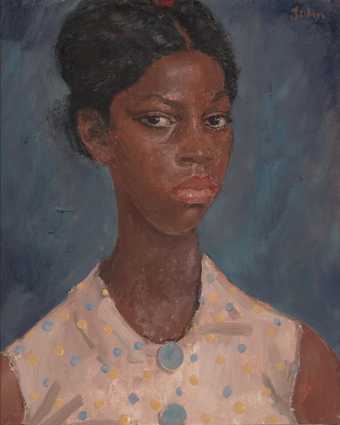
Augustus John OM, A Jamaican Girl 1937. Tate. © The estate of Augustus John. All Rights Reserved 2023 / Bridgeman Images.
Reality and Dreams 1920–1940
17 rooms in Historic and Early Modern British Art
British artists recalibrate their work in the aftermath of the First World War as they imagine how they could play a part in building a better society
The catastrophic impact of the war prompts many artists in Britain to change their work radically. Before the war, geometric and mechanised forms were seen as new, dynamic and exciting. However, in its aftermath, artists turn back to traditional genres such as portraiture, religious painting and landscapes. They term this mini revival as the ‘Return to Order’. More than revisiting old approaches though, this trend takes realism in new directions.
Younger generations react against pre-war values. They try to enjoy life to the fullest in the years known as the ‘Roaring Twenties’. Some artists portray women’s independence from traditional gendered roles. Others document the new diversity of London’s nightlife, as the city buzzes with new fashions, theatre productions and jazz brought from the United States by Black entertainers. Britain also enters a golden age of cinema and people flock to see new films.
However, this is also a time of depression, deflation and a steady decline of the British economy. By the mid-1920s, unemployment rises to over ten percent of the workforce in Britain. Declining industry leads to lower wages and increasingly bitter trades disputes. This culminates in a general strike in 1926. The Mass Observation research project documents working-class life during this period of economic decline. The Artists International Association leads artists’ opposition to a rise of fascism in Britain.
Surrealist artists are concerned with creating works influenced by dreams and fantasies. They create compositions that reject rationality and conscious thought through practices such as automatic drawing (drawing without thinking). The International Surrealist Exhibition in London in 1936 exposes younger British artists to the movement and encourages them to reimagine their work.
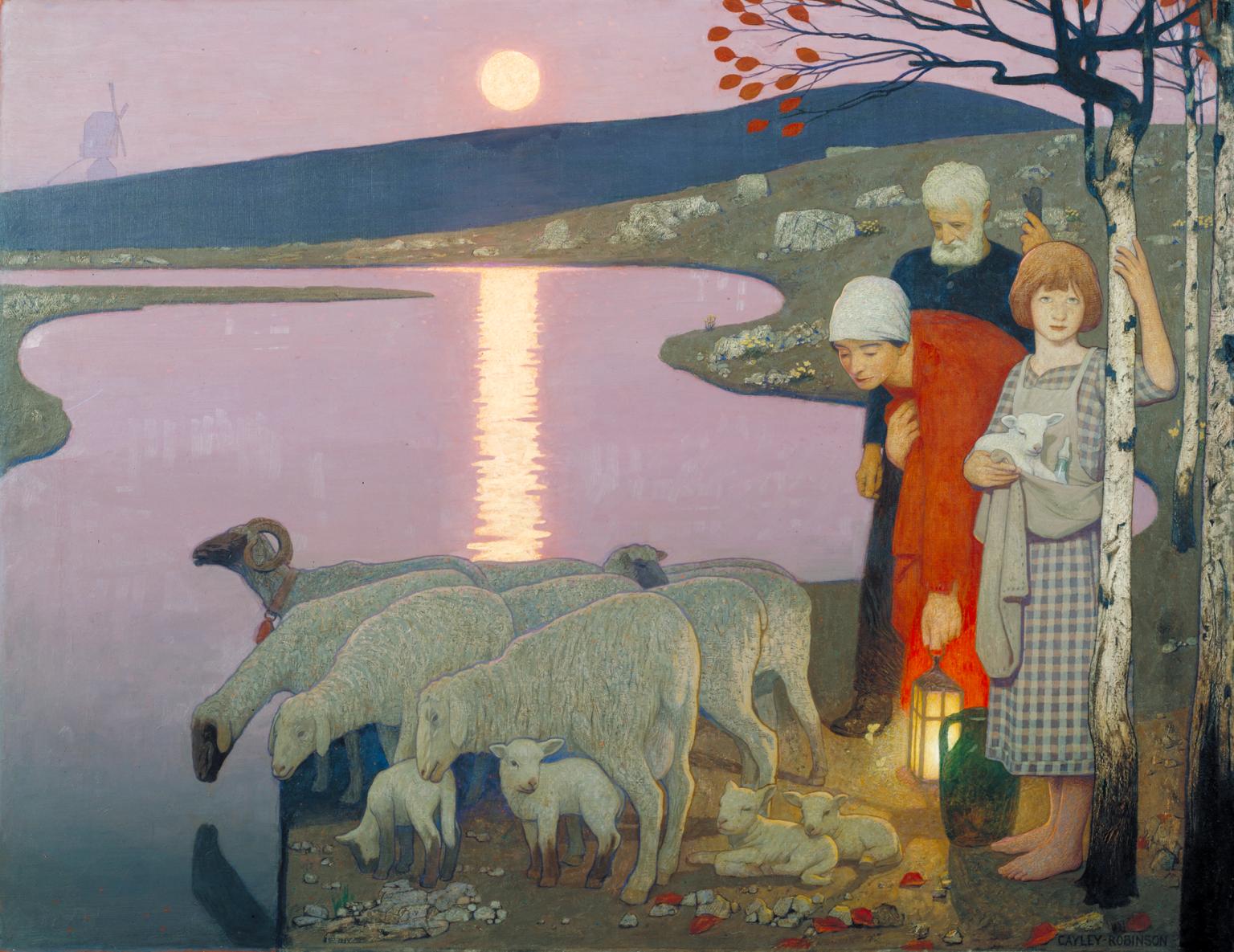
Frederick Cayley Robinson, Pastoral 1923–4
1/30
artworks in Reality and Dreams
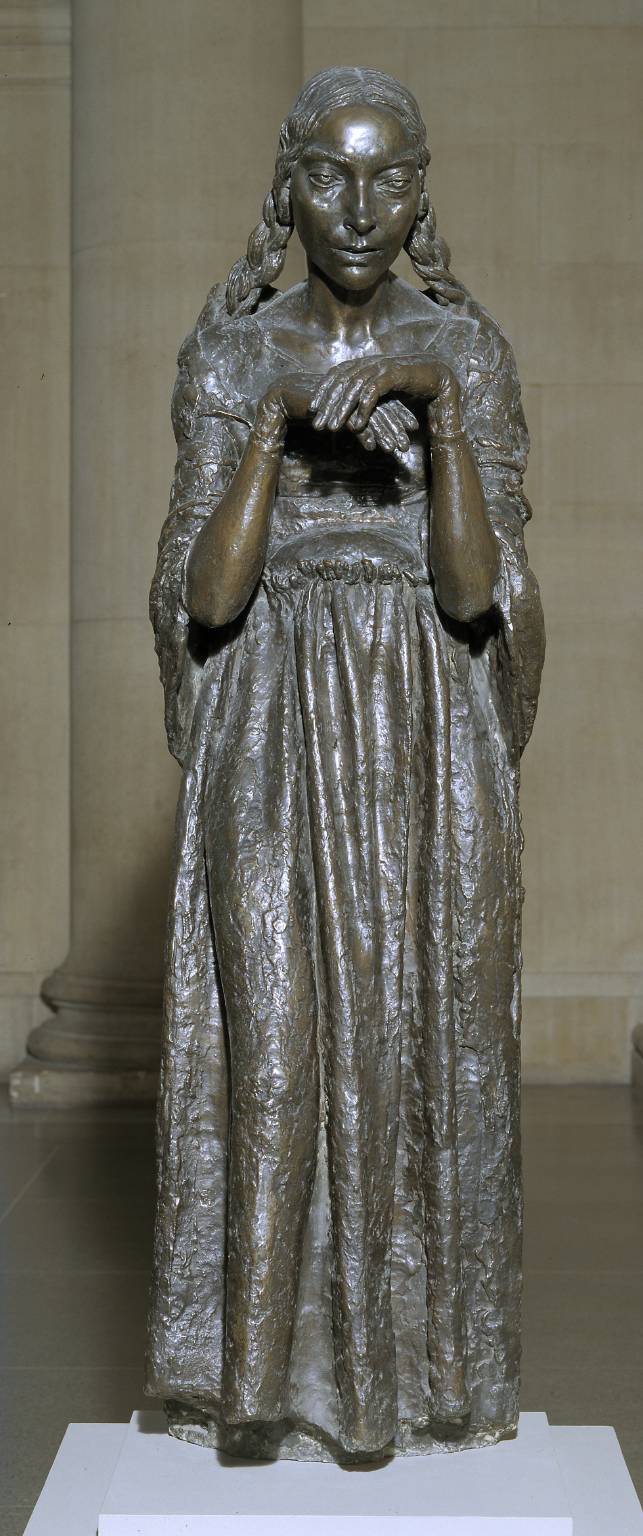
Sir Jacob Epstein, The Visitation 1926
This life-size figure was intended to be one of a pair, never completed, called 'The Visitation'. This was an event recorded in the Bible, where the Virgin Mary visits her cousin Elizabeth to share with her the news that she is to give birth to Jesus. Epstein described this figure as expressing ' a humility so profound as to shame the beholder who comes to my sculpture expecting rhetoric or splendour of gesture'. When he first exhibited it he called it 'A Study' so as to diguise its content.
Gallery label, August 2004
2/30
artworks in Reality and Dreams
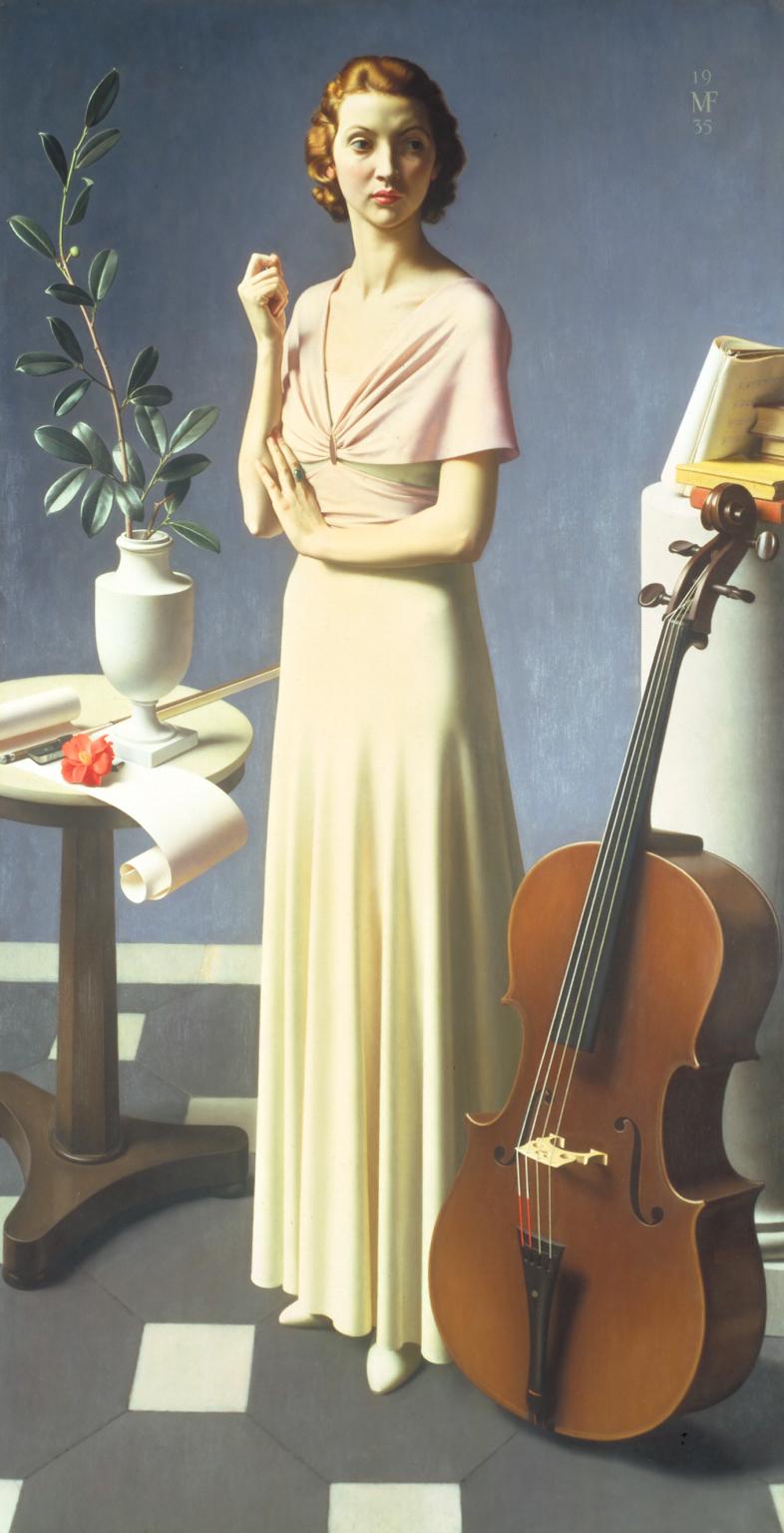
Meredith Frampton, Portrait of a Young Woman 1935
Frampton painted the sitter, Margaret Austin-Jones, standing next to a cello. He noted that, as she was very musical, the cello was an 'appropriate symbol.' Frampton said that he made this painting 'to celebrate an assembly of objects... beautiful in their own right’. Frampton's mother made the dress Margaret is wearing in the painting. The white vase on the table in the background was designed by Frampton. This painting relates to full-length portraits of women, associated with the work of earlier artists. However the clarity and precision of Frampton’s painting style gives this work a modern feeling.
Gallery label, August 2020
3/30
artworks in Reality and Dreams
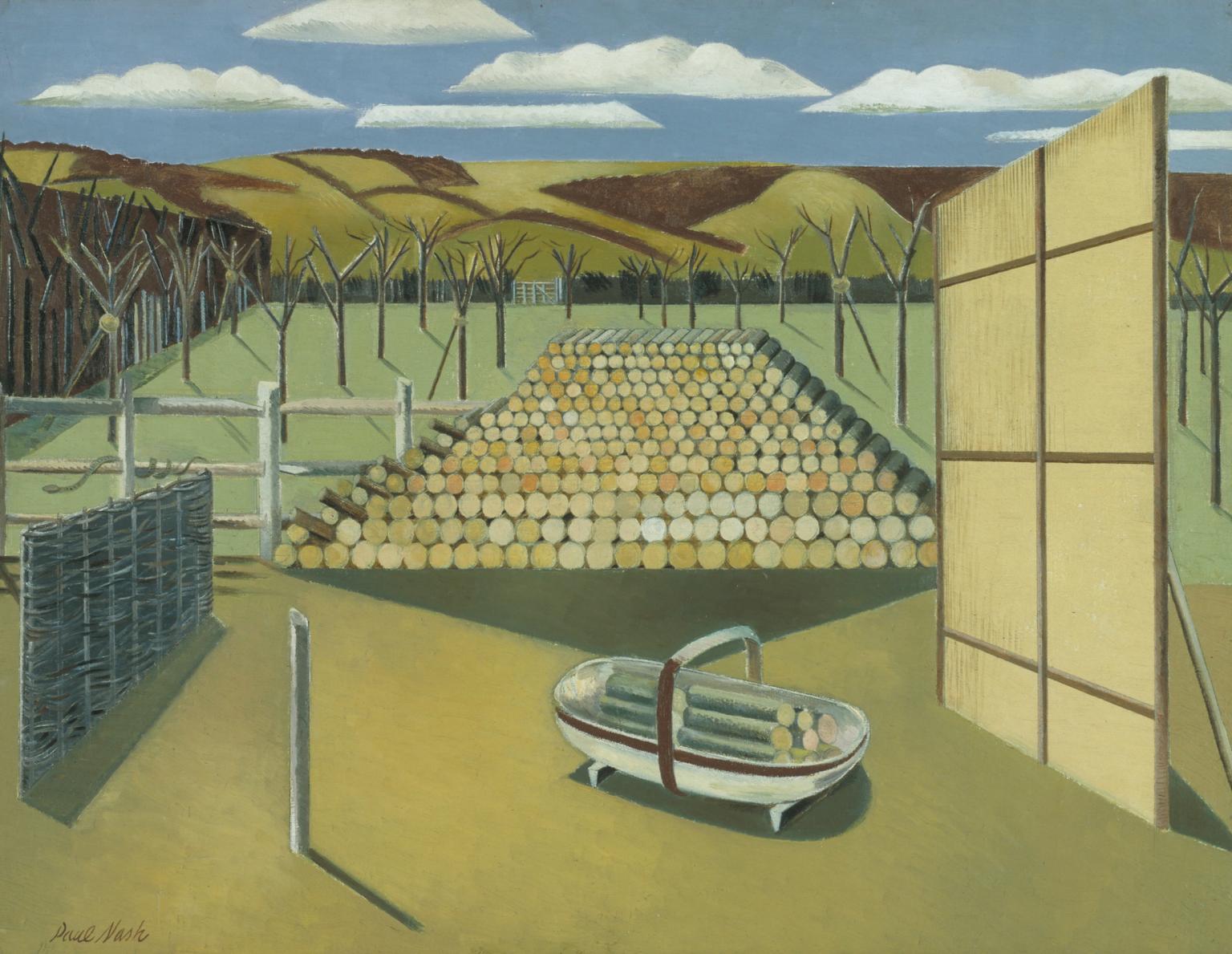
Paul Nash, Landscape at Iden 1929
This mysterious picture shows the view from Nash’s studio in Sussex. The dramatic perspective and strange juxtaposition of rustic objects creates a sense of the uncanny. It has been read as a statement of mourning. While the young fruit trees may suggest the defencelessness of youth, the altar-like pile of logs may be a symbol of fallen humanity; the fallen tree as a symbol for the dead was common in the art and literature of the war, not least in Nash’s own paintings.For many, an idea of the timeless and enduring English landscape seemed to displace the violent destruction of the war.
Gallery label, July 2007
4/30
artworks in Reality and Dreams
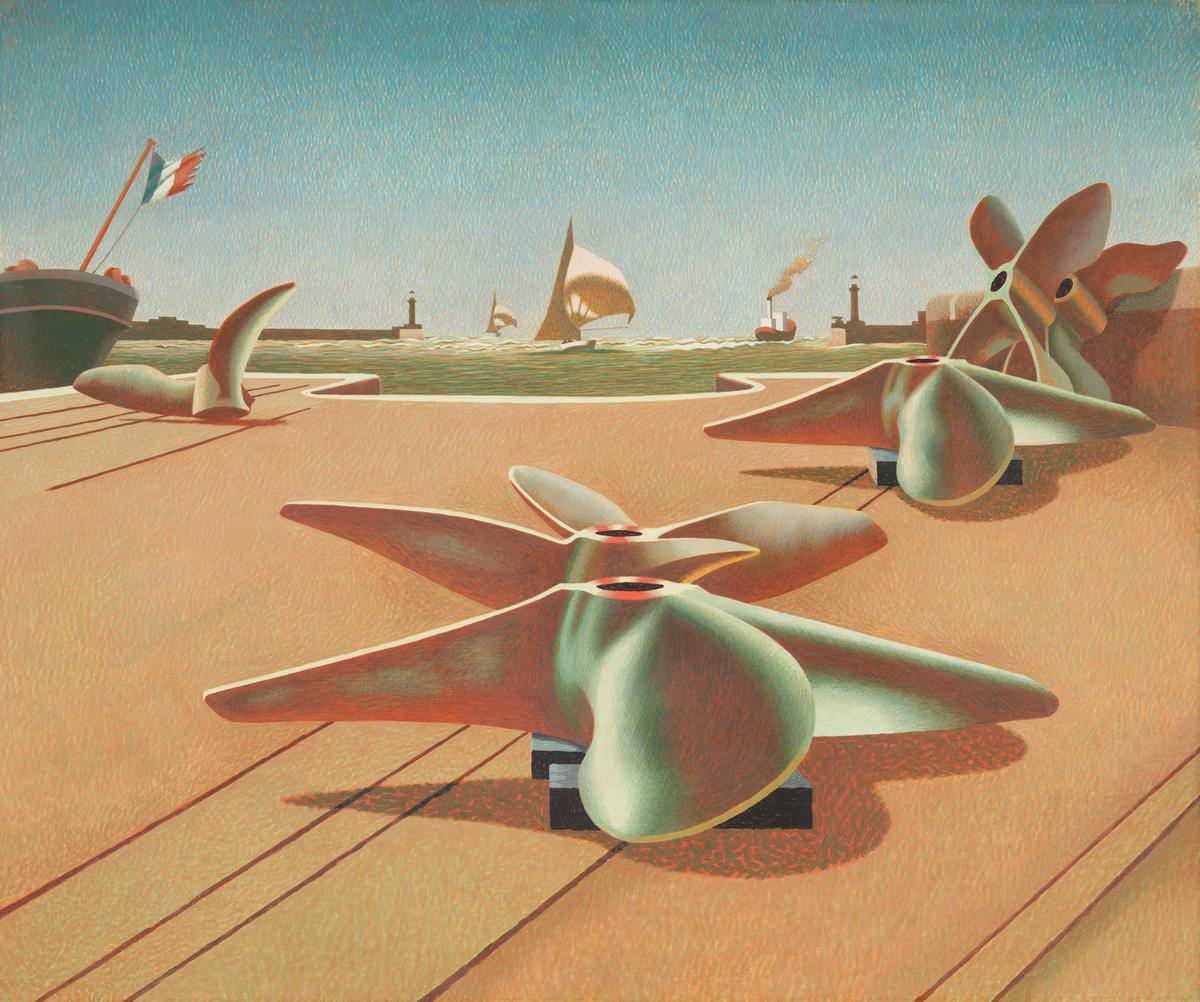
Edward Wadsworth, Bronze Ballet 1940
This harbour scene is based on Le Havre in northern France. Although this is a peaceful scene, it was painted during the early years of the Second World War, in Maresfield in Sussex. From there, Wadsworth could hear the bombing of French ports by the German forces.Wadsworth painted many collections of marine objects like this. He was interested in animism – giving life to inanimate objects. Here the forms of the ships’ propellers suggest movement, or a dance, while also hinting at the function they will perform out at sea.
Gallery label, April 2019
5/30
artworks in Reality and Dreams
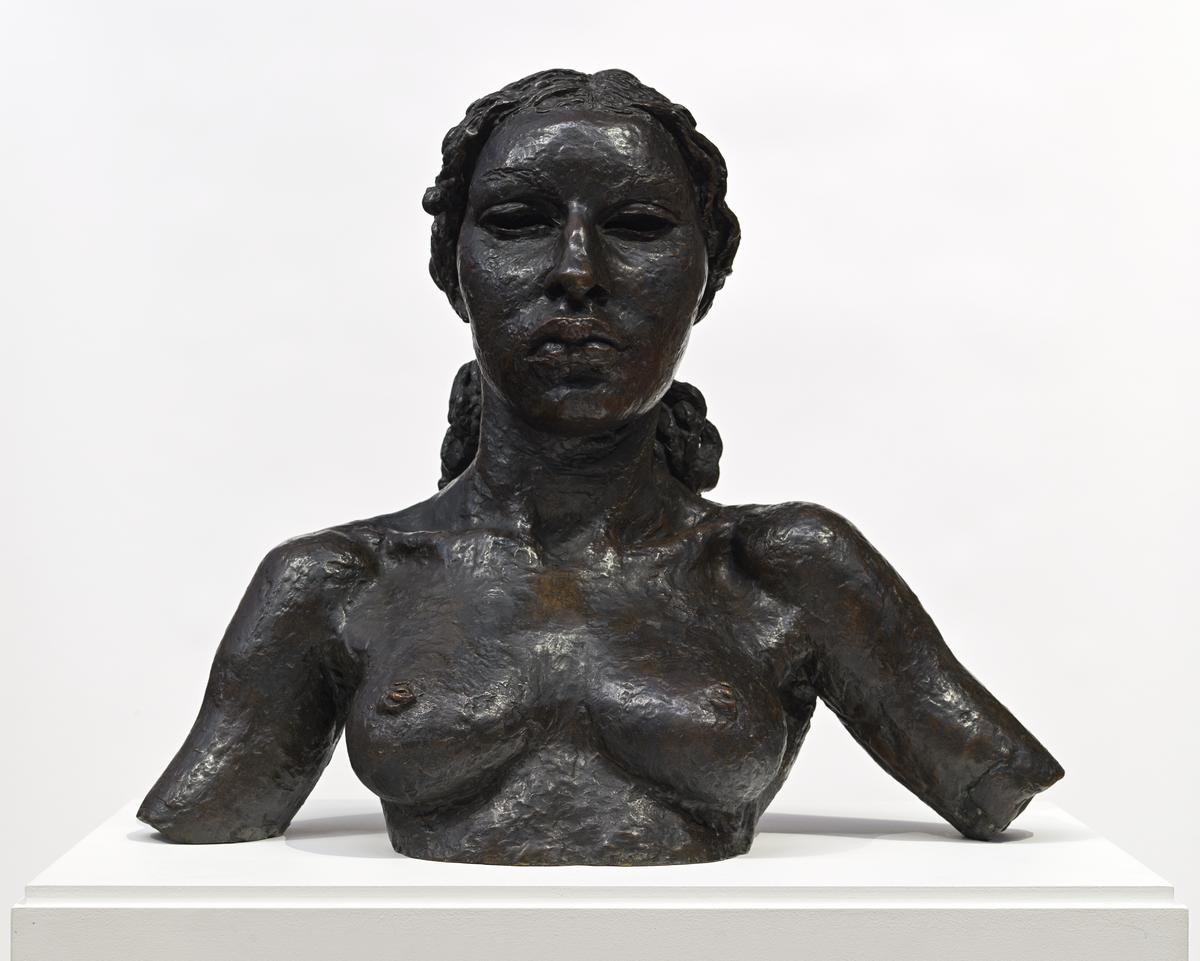
Sir Jacob Epstein, Esther 1930
During the 1930s Epstein modelled over one hundred portraits ranging from commissions of eminent men to uncommissioned busts of favourite models. Esther was a nightclub entertainer and a professional artist's model. The vigorously modelled surfaces of this bronze bust are an example of the great vitality Epstein managed to infuse into his work at this time, whether modelled portrait busts or imaginative stone carvings.
Gallery label, April 2021
6/30
artworks in Reality and Dreams

L.S. Lowry, Coming Out of School 1927
Like many of Lowry's pictures this is not a depiction of a particular place, but is based on recollections of a school seen in Lancashire. Lowry's combination of observation and imaginative power often produced images which capture a deeply felt experience of place, with which others could identify. For example, in 1939 John Rothenstein, then Director of the Tate Gallery, visited Lowry's first solo exhibition in London and later wrote: 'I stood in the gallery marvelling at the accuracy of the mirror that this to me unknown painter had held up to the bleakness, the obsolete shabbiness, the grimy fogboundness, the grimness of northern industrial England.' This work was then purchased by the Trustees.
Gallery label, April 1994
7/30
artworks in Reality and Dreams
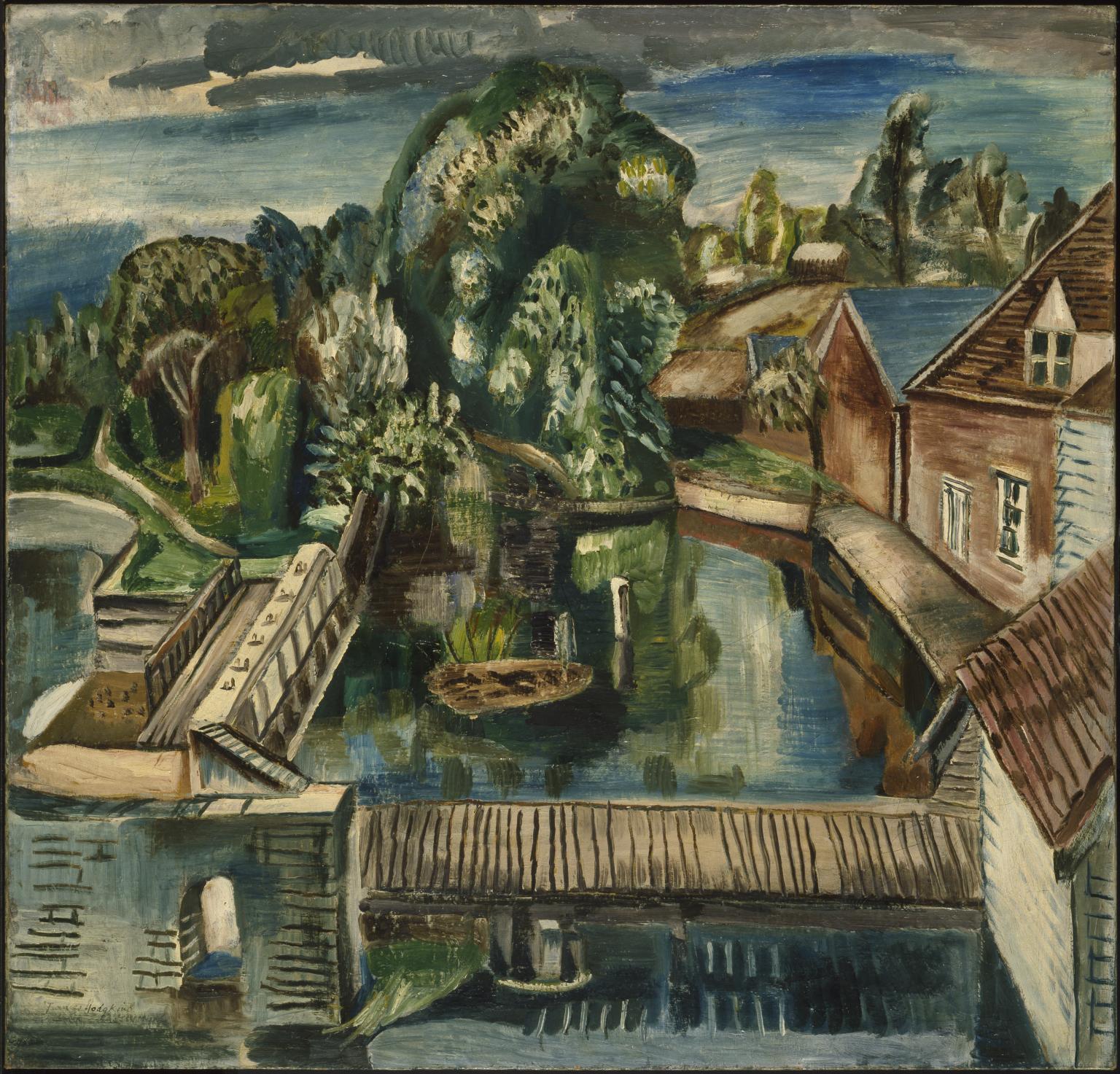
Frances Hodgkins, Flatford Mill 1930
Hodgkins was a New Zealander who came to Europe in 1901. Based mainly in Britain, she also spent time in Paris. She was a member of the Seven & Five Society. In the 1920s, its members developed an art that was both modern and returned to traditional motifs such as landscape and still life. A strong fascination with British landscape and traditions was evident. This is signalled, perhaps, by the fact that this scene was closely associated with John Constable who painted Flatford Mill in 1816.
Gallery label, September 2016
8/30
artworks in Reality and Dreams
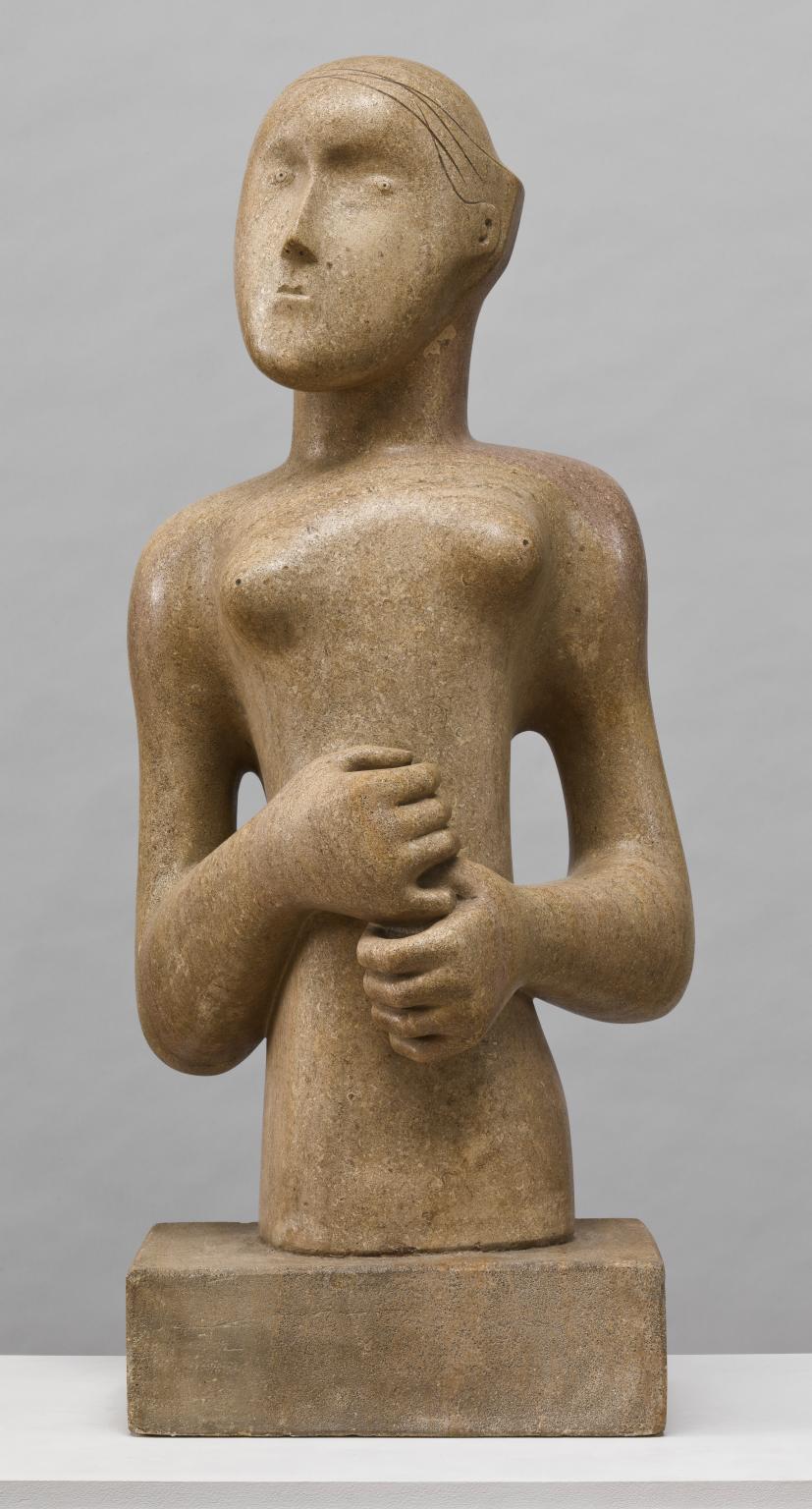
Henry Moore OM, CH, Girl 1931
From the mid-1920s Moore had advocated the abolition of the 'Greek ideal' in sculpture in favour of non-European sources, which he felt had much greater vitality. This work reveals his fascination with the Mesopotamian sculptures in the British Museum, especially solemn standing figures with clasped hands. He reviewed a book on Mesopotamian art for 'The Listener' in June 1935. Around 1931-2 Moore also turned his attention to the study of natural forms, such as shells, bones and pebbles. He then brought together his studies in natural forms with his admiration for non-European 'primitive' sculpture and began to introduce a rhythmic and non-naturalistic approach to the depiction of the human figure.
Gallery label, August 2004
9/30
artworks in Reality and Dreams
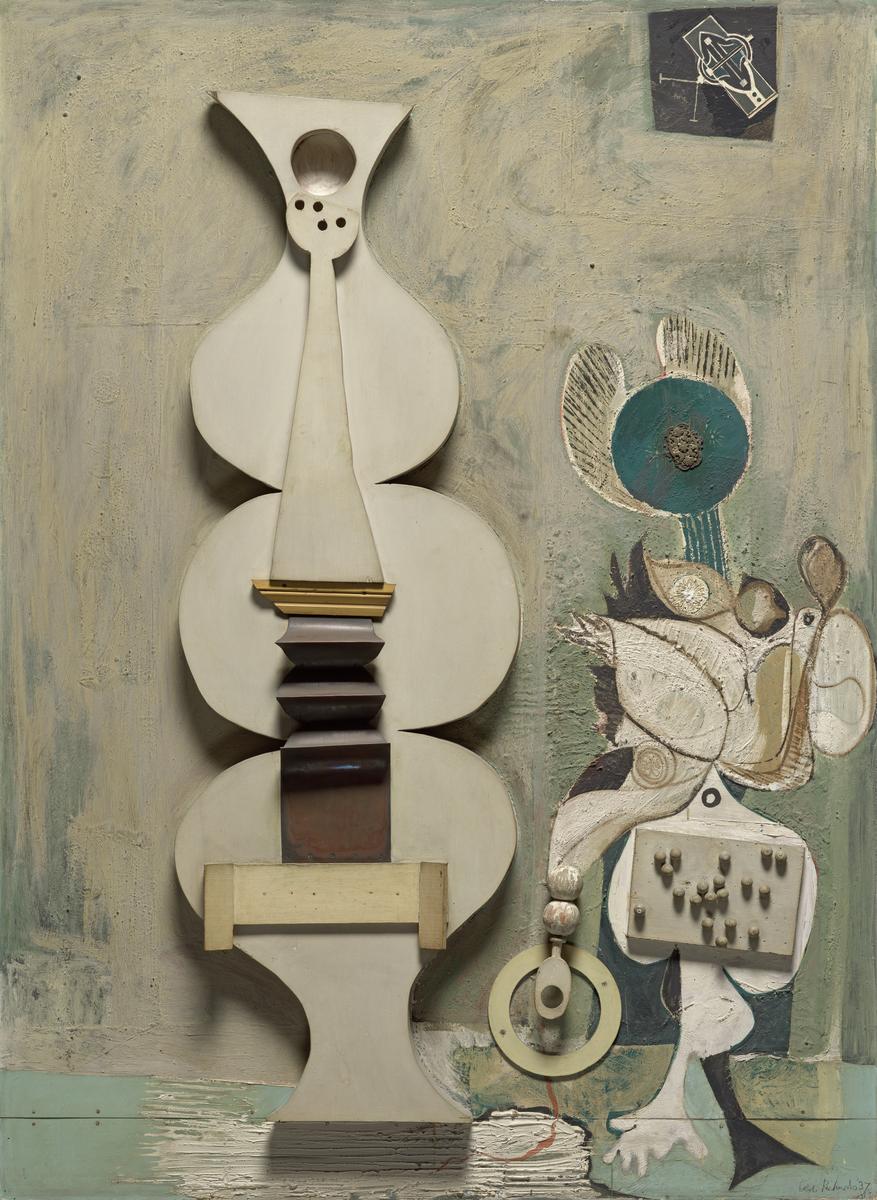
Ceri Richards, Two Females 1937–8
The International Surrealist Exhibition was held at the Burlington Galleries in the summer of 1936, and for a brief moment, in the words of André Breton, London was ‘the centre of the Surrealist universe’. Richards exhibition gave him an opportunity to study important works by Ernst, Picasso and Miro, among others. Subsequently a pronounced erotic sensibility became apparent in Richards’s own loosely surreal work. Two representations of the female form are contrasted in this relief. On the right, virginal, though budding and seductive, and on the left, fulsome and latently sexual.
Gallery label, September 2016
10/30
artworks in Reality and Dreams
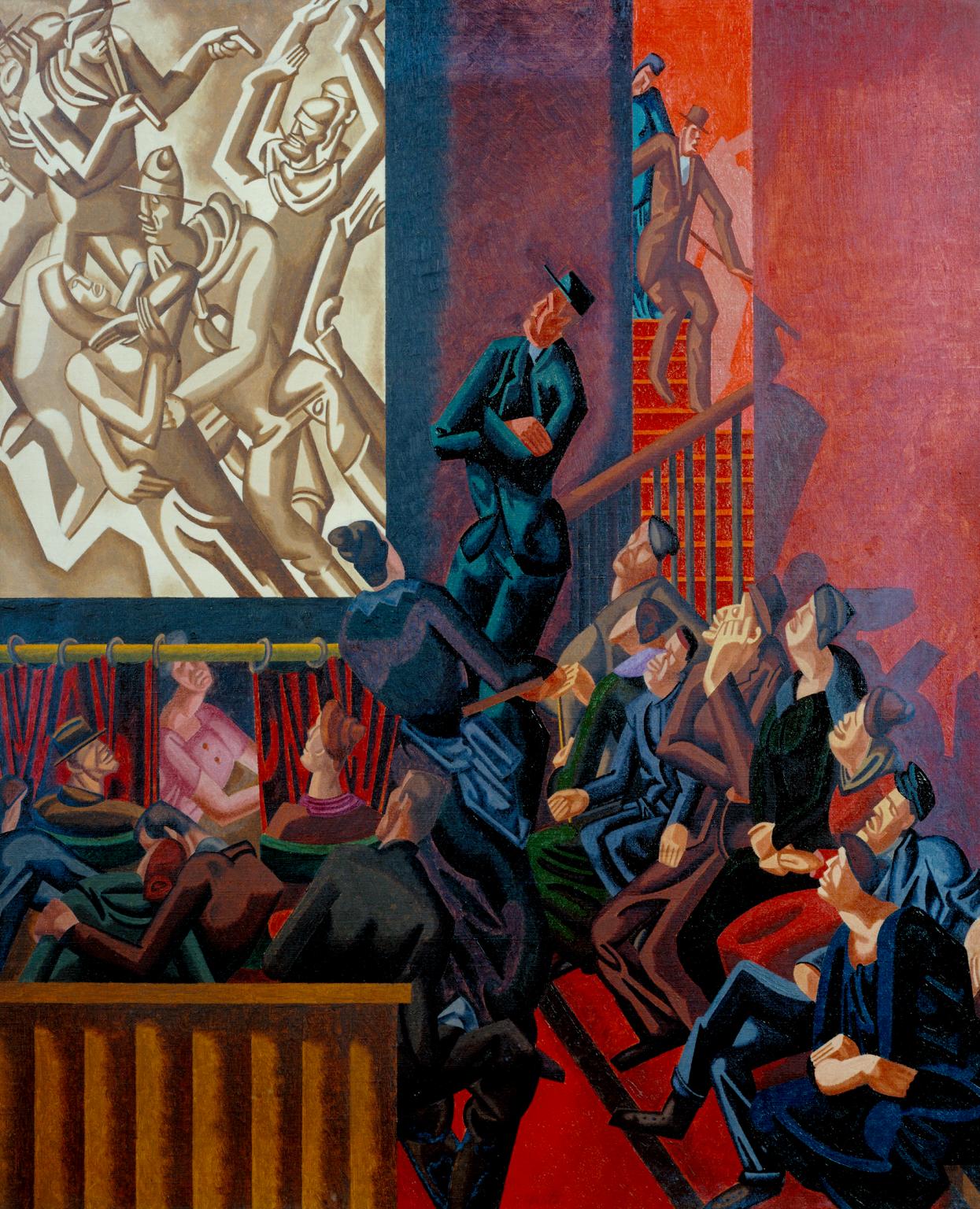
William Roberts, The Cinema 1920
Roberts’s early work was abstract and he joined Wyndham Lewis’s vorticist group. After the First World War, he made a name as the painter of everyday modern scenes. While film had been invented in the late 19th century, it reached new heights of sophistication and popularity in the 1920s, the age of Charlie Chaplin, Buster Keaton and the rise of Hollywood. Movies were silent until 1927 and were accompanied by live music. Many music halls, traditional places of popular entertainment, were adapted to show films.
Gallery label, September 2016
11/30
artworks in Reality and Dreams
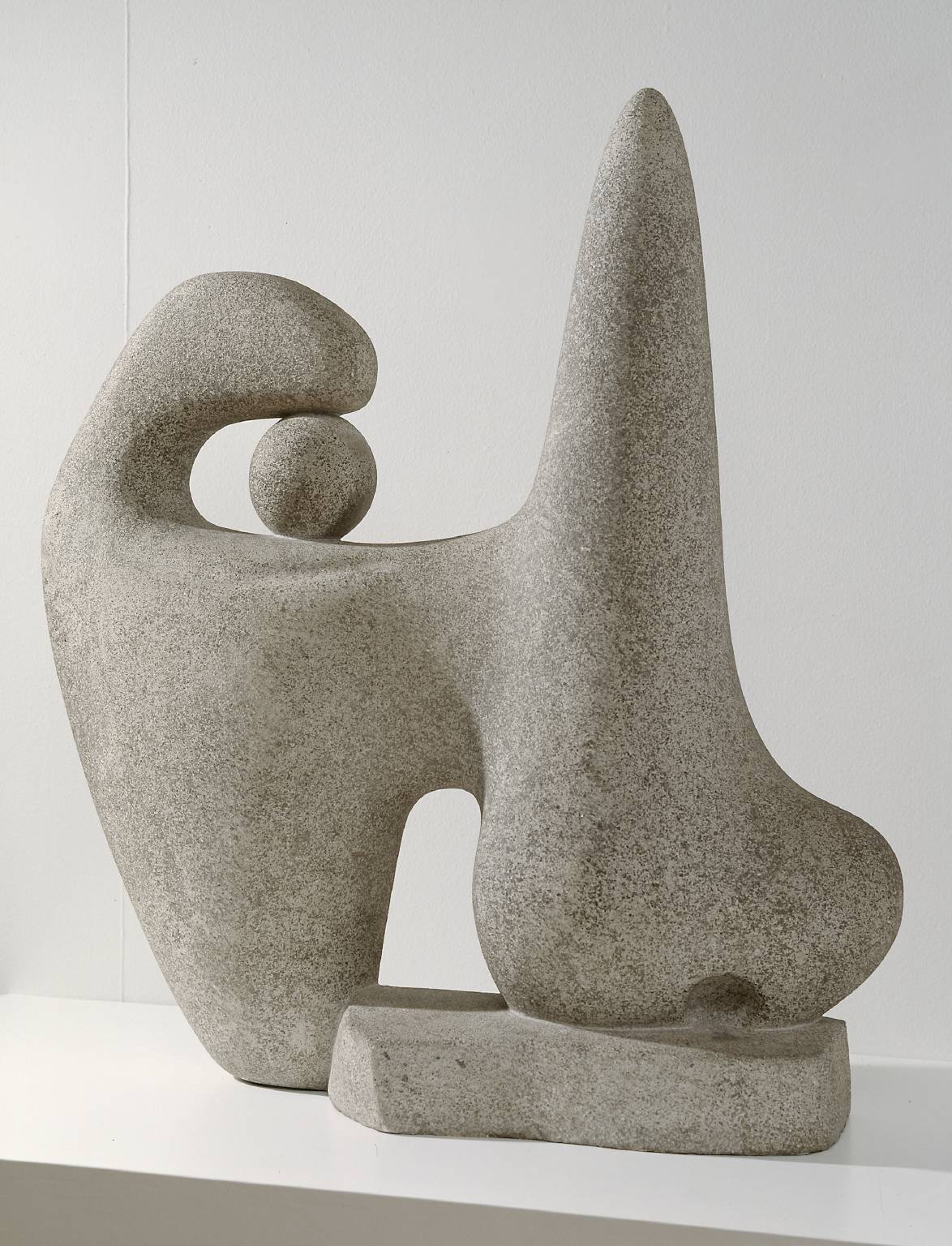
F.E. McWilliam, Eye, Nose and Cheek 1939
From 1931-33 McWilliam lived and worked in Paris. On his return to London he worked in an independent manner but was in close contact with the British artists Henry Moore, Paul Nash and Roland Penrose. The International Surrealist Exhibition of 1936 made a significant impact on him and, during 1939-40, he made a striking series of carvings in wood and stone which he entitled 'The Complete Fragment'. These carvings were mostly part or parts of the human head, greatly enlarged and complete in themselves. McWilliam was interested in the interplay between solid volume and surrounding space in these works, and also how the viewer completes the 'missing' parts of the sculpture in the mind's eye.
Gallery label, August 2004
12/30
artworks in Reality and Dreams
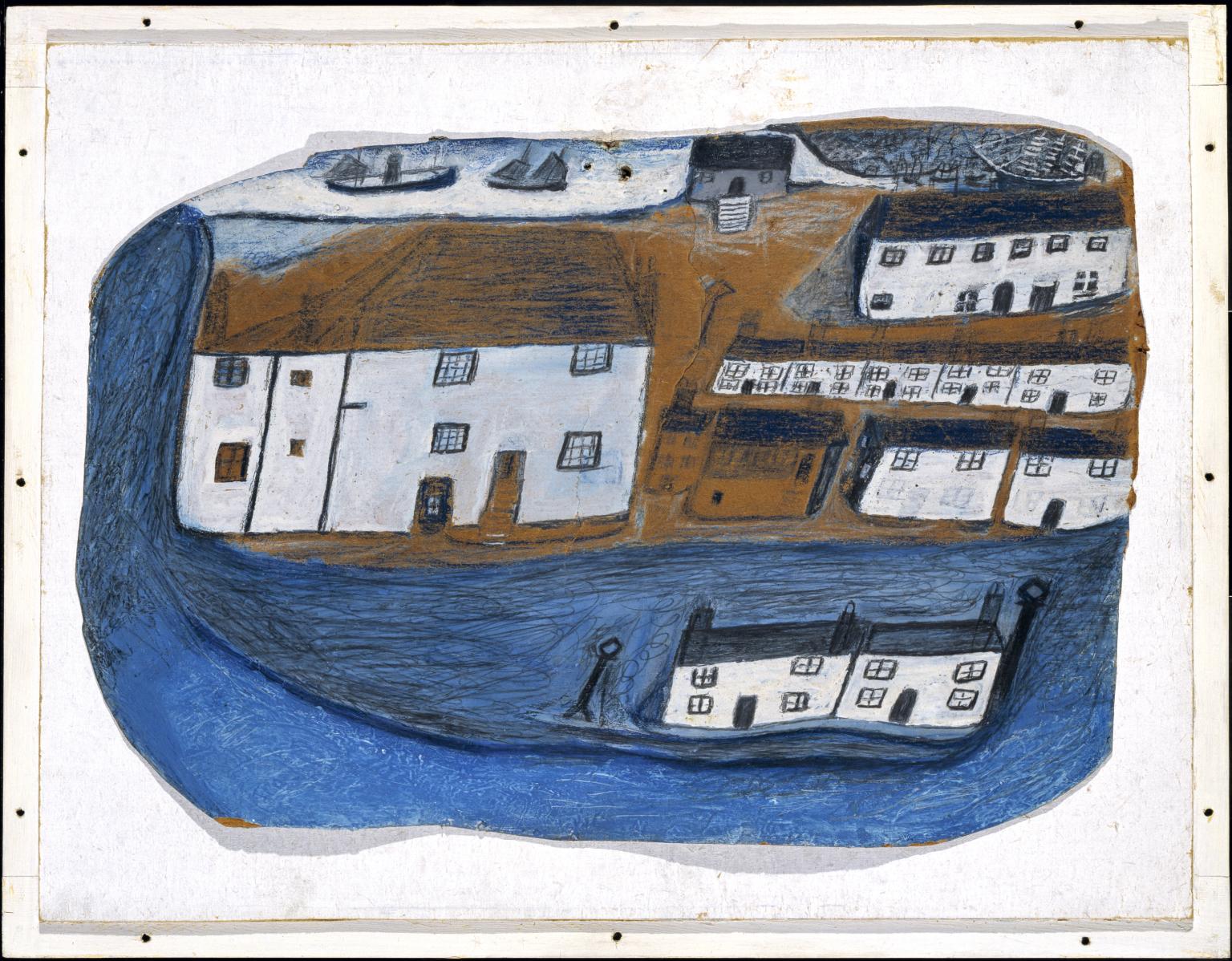
Alfred Wallis, St Ives c.1928
Wallis had worked as seaman, ice cream vendor and scrap merchant before he took up painting as a hobby in his retirement. He lived in St Ives, Cornwall, a fishing community and artists’ colony. There he encountered the painters Ben Nicholson and Christopher Wood and his work was shown with theirs in London. Most of his paintings are of his local environment or of places and events remembered from his past.
Gallery label, July 2017
13/30
artworks in Reality and Dreams
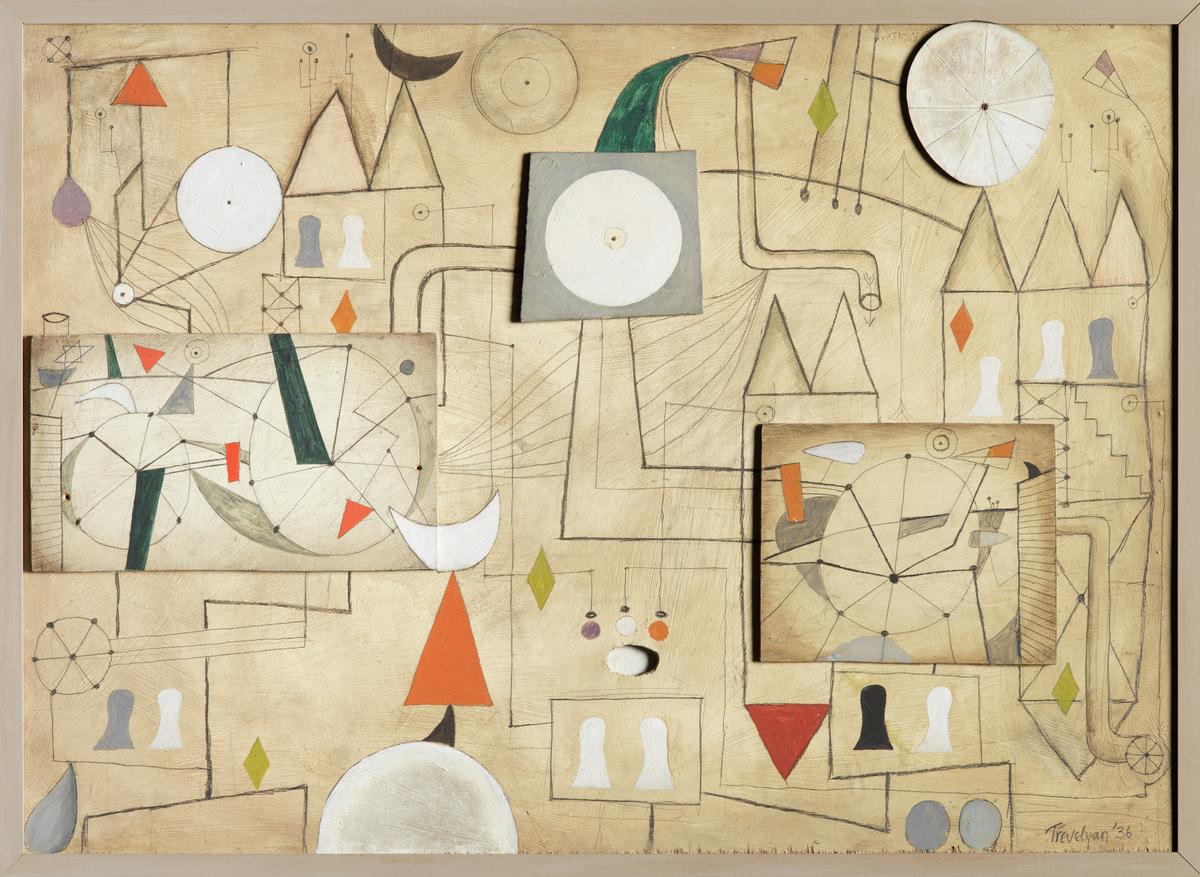
Julian Trevelyan, A Symposium 1936
Trevelyan became interested in Surrealism while at Cambridge, and came to know many of the movement’s leading artists when he lived in Paris in 1931-4. Influenced by Klee and encouraged by his friendship with Miró and Calder, he gradually developed his own mode of abstract Surrealism. In A Symposium Trevelyan combined painting and carving and attached parts to the wooden panel. He later recalled: ‘I had invented a sort of mythology of cities, of fragile structures carrying here and there a few waif-like inhabitants.’
Gallery label, December 2005
14/30
artworks in Reality and Dreams
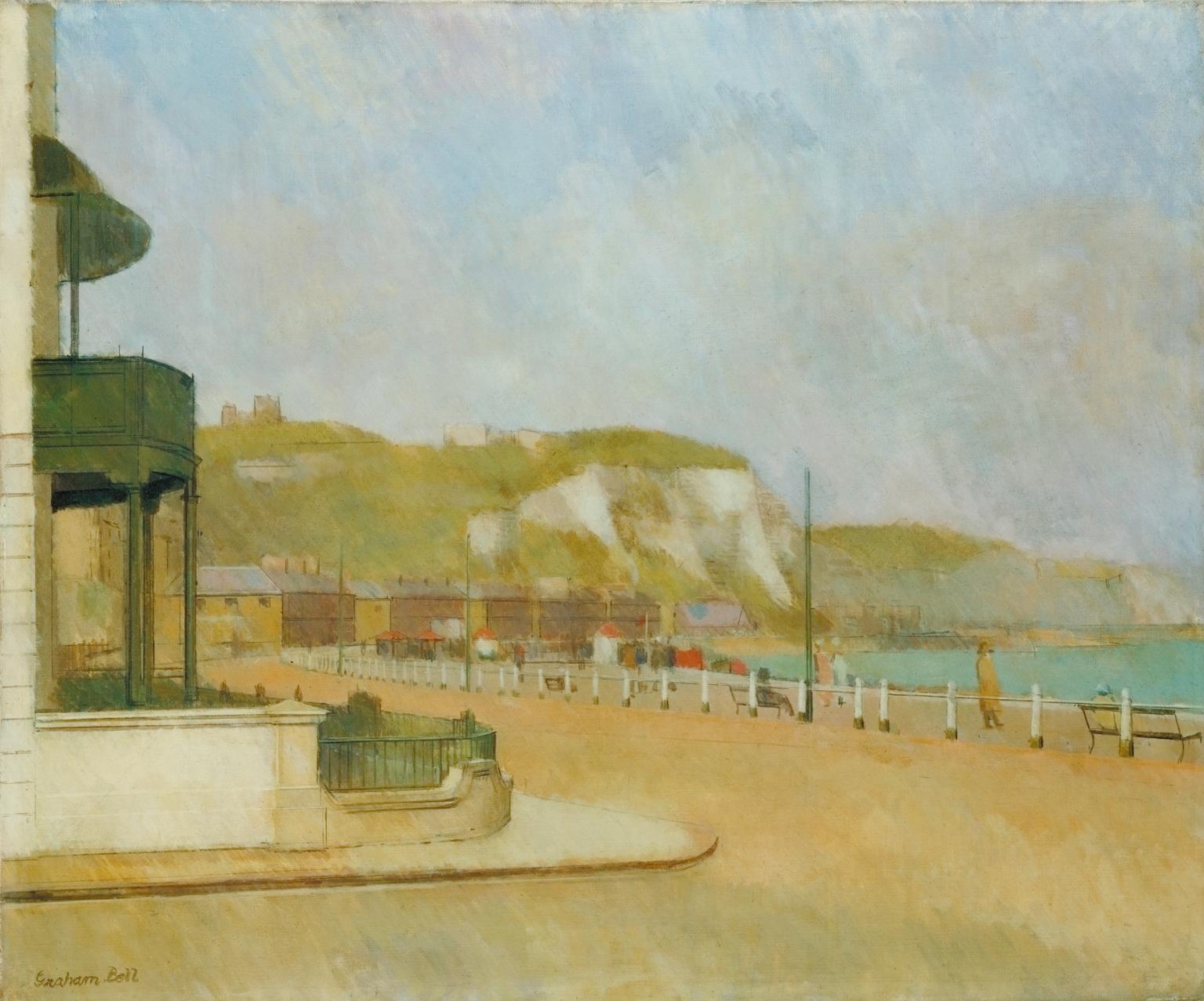
Graham Bell, Dover Front 1938
Bell painted this picture on a trip to Dover in 1938 to fulfill a commission for the International Business Machines Corporation. The finely-observed detail of the hotel on the left, the chalk white cliffs and castle ramparts is typical of the realism of the Euston Road School, with which Bell was closely involved.
Although the artist painted on the spot, he may have used the photograph shown to the left to work on the details in his studio.
Gallery label, September 2004
15/30
artworks in Reality and Dreams
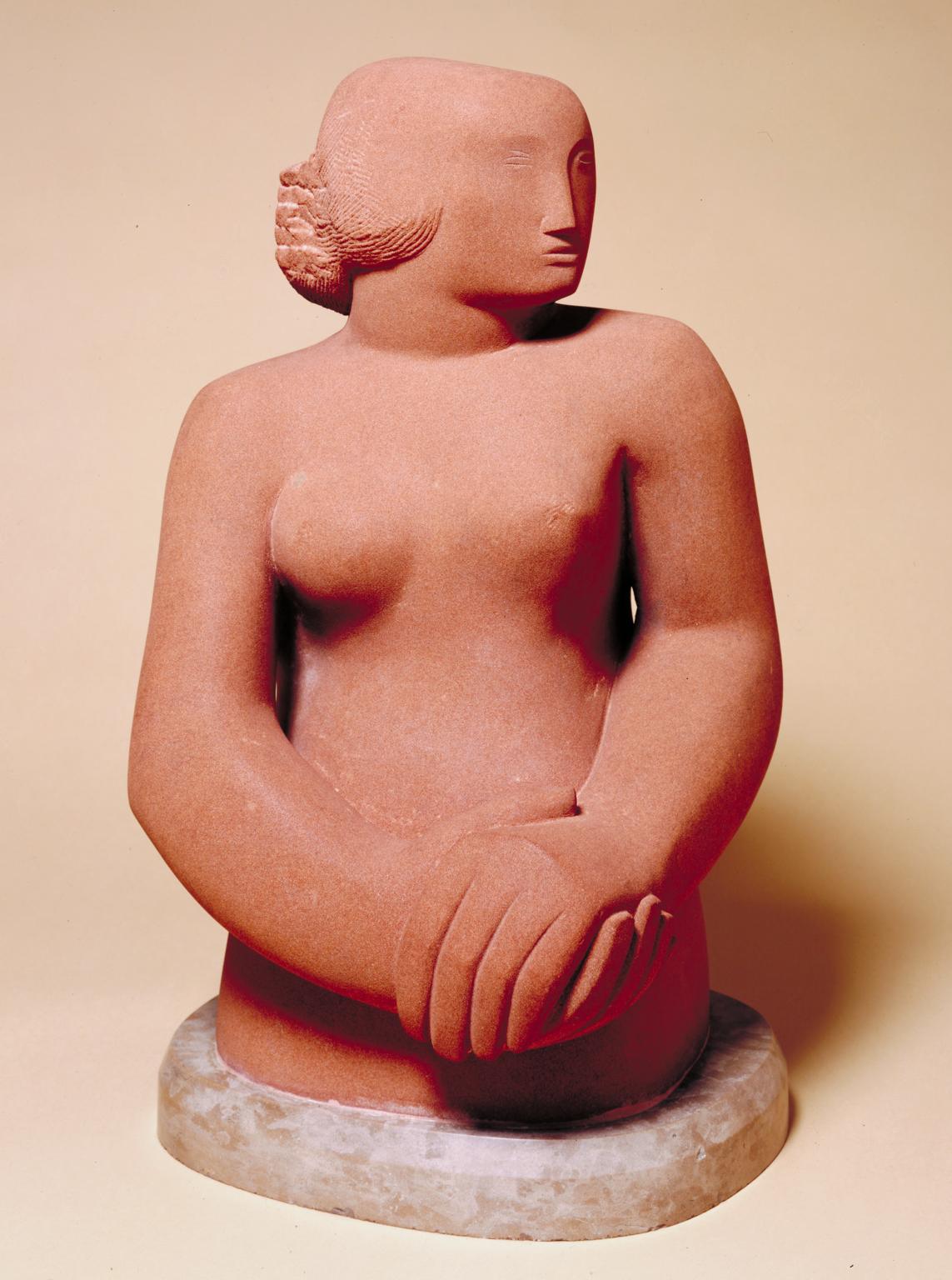
Dame Barbara Hepworth, Figure of a Woman 1929–30
Hepworth was one of a number of sculptors who returned to the handcraft of carving. The resulting immediacy of the artist’s relationship to her material was crucial. She described her process as an ‘effort to find a personal accord with the stones...I was fascinated by the kind of form that grew out of each sculpture, and by the kind of form that grew out of achieving a personal harmony with the material’.Like others, she sourced a wide range of indigenous British stones. This figure is made of Corsehill stone, a red sandstone quarried in Dumfriesshire.
Gallery label, July 2007
16/30
artworks in Reality and Dreams

Paul Nash, Equivalents for the Megaliths 1935
‘Megaliths’ are great standing stones, the remains of ancient temples in places such as Stonehenge; this work was inspired by the stones at Avebury, on the Wiltshire Downs. Here Nash brings together Britain’s most advanced cultural objects with its most ancient: the geometric forms are similar to those found in contemporary abstract sculpture, but are also ‘equivalents’ for prehistoric standing stones. Nash had an enduring fascination with the mystical qualities of inanimate objects. The abstract forms draw on the emotional presence of ancient monuments, integrated with the landscape, but also provide a powerful element of abstract design.
Gallery label, September 2004
17/30
artworks in Reality and Dreams
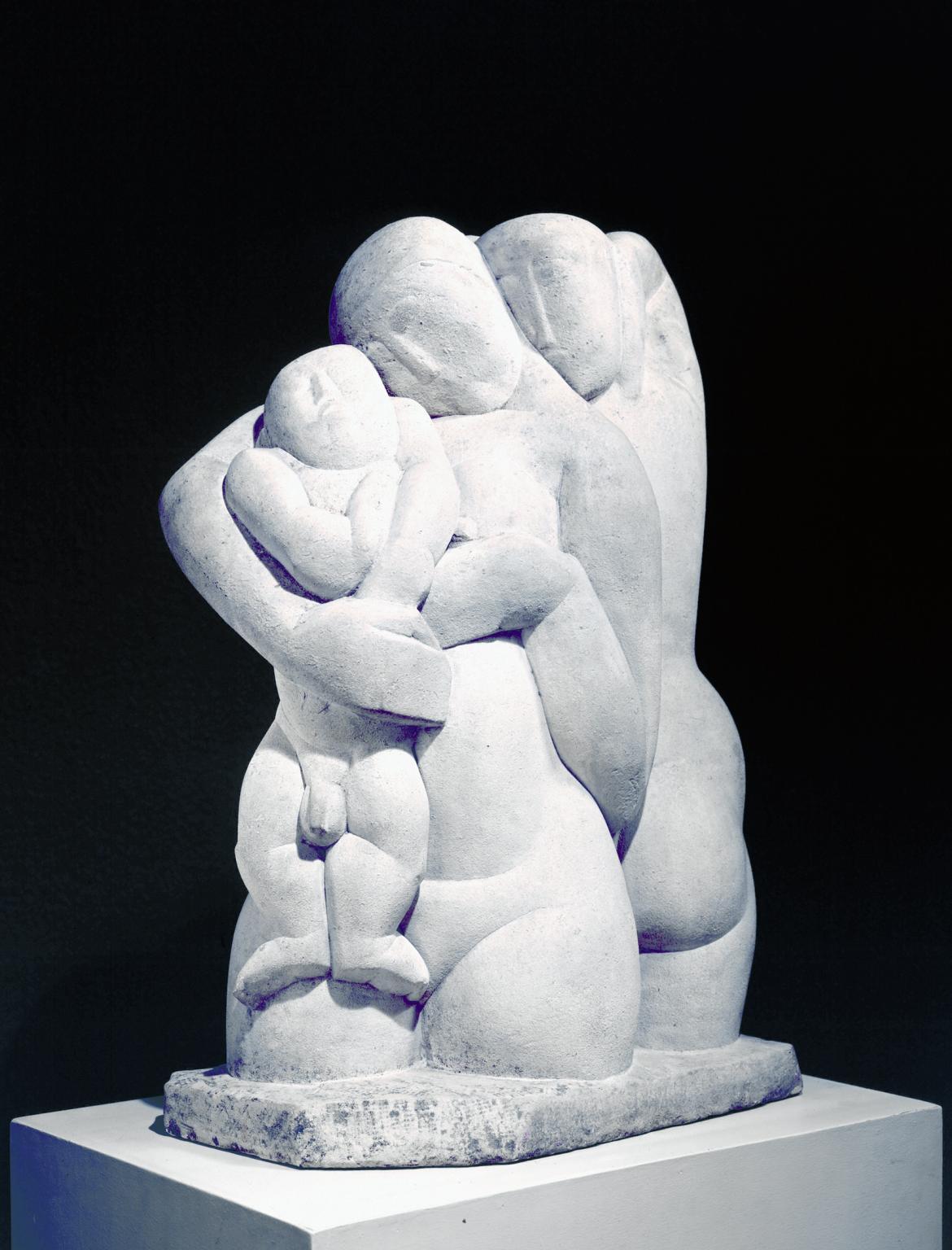
Frank Dobson, The Man Child 1921
Dobson trained as both a painter and sculptor, but concentrated on sculpture after active service in the First World War. Like many of his contemporaries, he found inspiration for his work in the ethnographic collections of the British Museum. He particularly admired carvings from the Congo in Africa. Such interest in what had been considered ‘less civilised’ cultures became more widespread after the ‘sophisticated’ destruction of the war.Here, in the wake of conflict, Dobson returns to fundamental human relationships. The manchild of the title melds with two female figures who seem to embody maternal protection expressing both joy and fear for the new life.
Gallery label, July 2007
18/30
artworks in Reality and Dreams

Ithell Colquhoun, Scylla 1938
The title of this work refers to the female monster who, according to ancient Greek mythology, inhabited a narrow channel of water and fed on passing sailors. Colquhoun explained that the image could be understood in two ways, both as a seascape and as an image of her own body. ‘It was suggested by what I could see of myself in a bath…it is thus a pictorial pun, or double-image’. The rock formations can also be seen as knees, with seaweed in place of pubic hair. This work was painted at a time when Colquhoun was exploring surrealist ideas such as the double image.
Gallery label, January 2019
19/30
artworks in Reality and Dreams
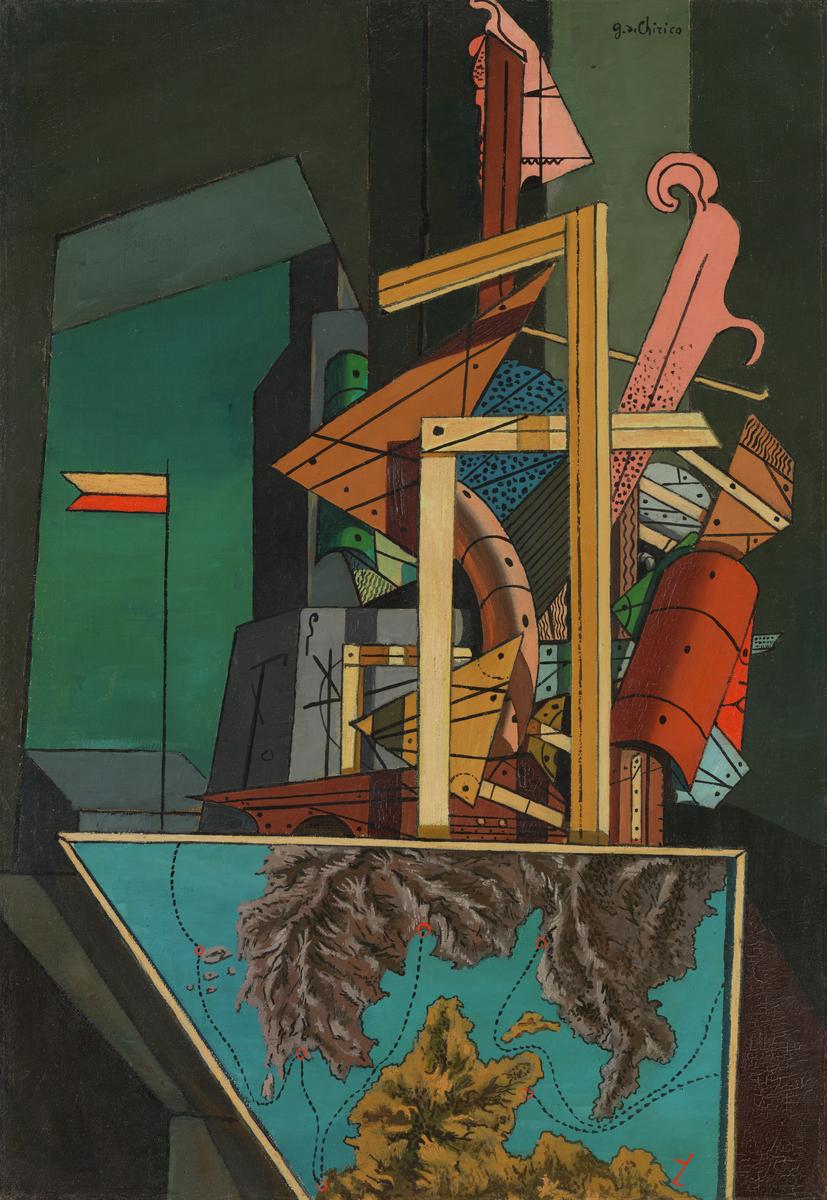
Giorgio de Chirico, The Melancholy of Departure 1916
De Chirico painted The Melancholy of Departure after he returned from Paris to Italy to serve in the First World War. The window and the map with a traced route evoke ideas of travel, suggesting escape from a cluttered, claustrophobic studio. Even as a child in Greece, de Chirico felt detached from his surroundings and identified with the voyaging Argonauts of Greek mythology. He imagined their journey across ‘measureless oceans’, an atmosphere which the Paris Surrealists saw as anticipating their own concerns.
Gallery label, January 2022
20/30
artworks in Reality and Dreams
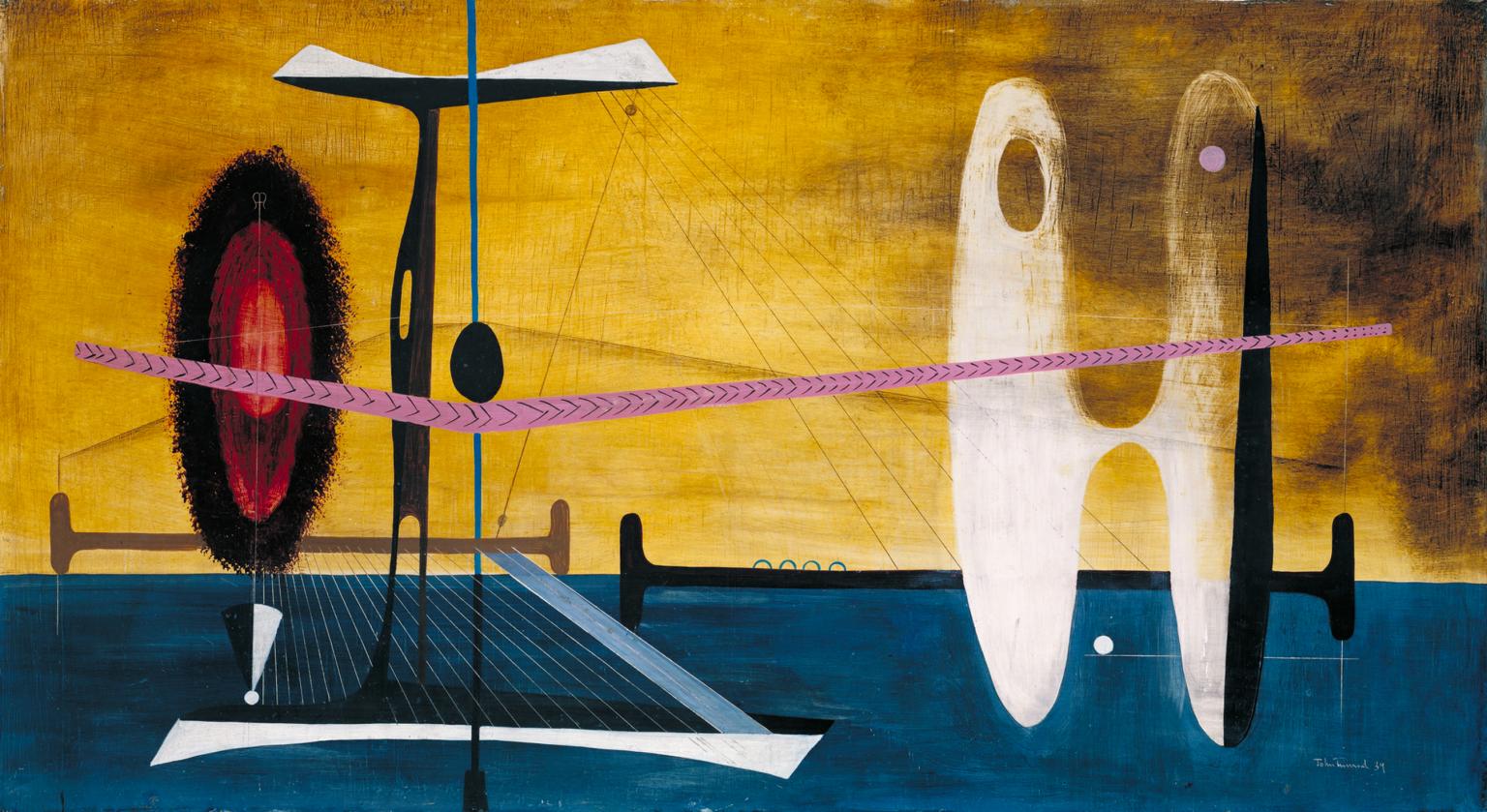
John Tunnard, Fulcrum 1939
An advocate of surrealism in Britain, Tunnard was interested in experimental techniques that summon an imaginative world. He developed a unique vision of quasi-mechanical structures in deep space that remain mysterious. Tunnard was taken up by the American collector Peggy Guggenheim and shown in her London gallery in 1939. The story goes that he crossed the private view to introduce himself to a prospective collector by turning three somersaults.
Gallery label, September 2016
21/30
artworks in Reality and Dreams
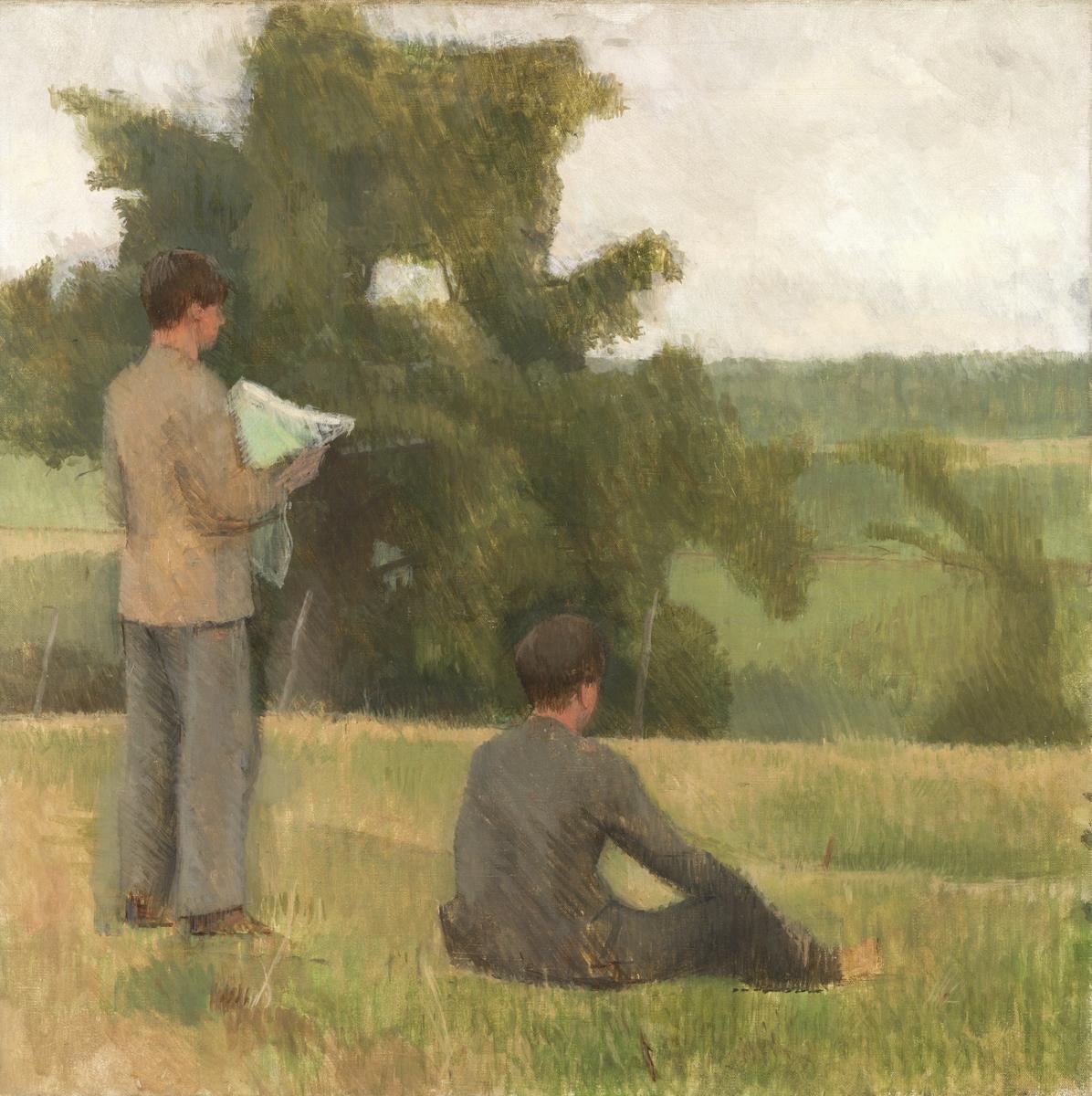
Sir William Coldstream, On the Map 1937
In this picture Coldstream shows fellow-artist Graham Bell standing holding a map, and his friend Igor Anrep sitting on the ground. Seen from behind, they look out across the landscape, apparently unaware of the painter’s presence. This conceit recalls such paintings as Degas’s Femme à sa Toilette, which Coldstream had praised for its ‘unbiased observation’. Such observation was to be a fundamental part of his painting from 1937 onwards.
Gallery label, September 2004
22/30
artworks in Reality and Dreams
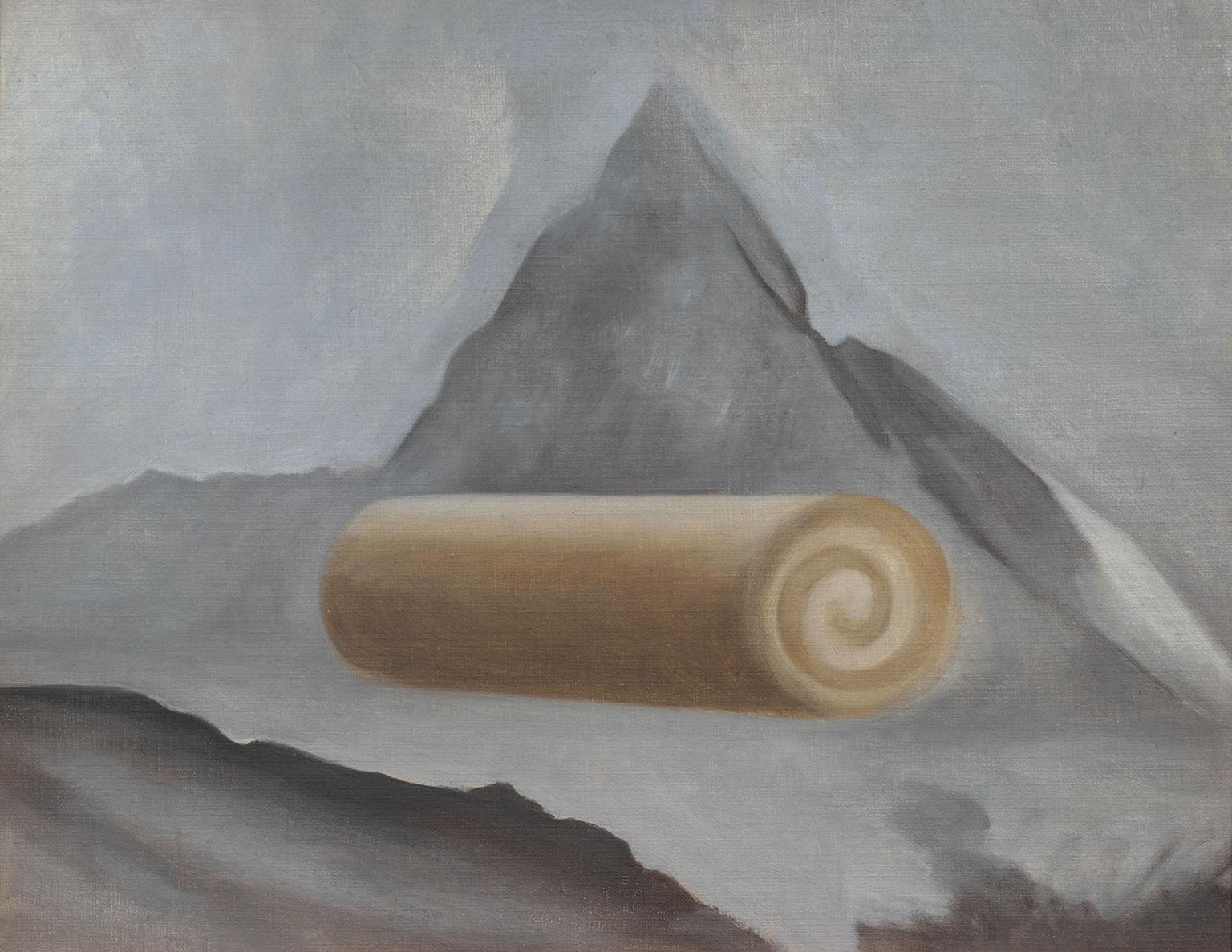
Humphrey Jennings, Swiss Roll 1939
23/30
artworks in Reality and Dreams
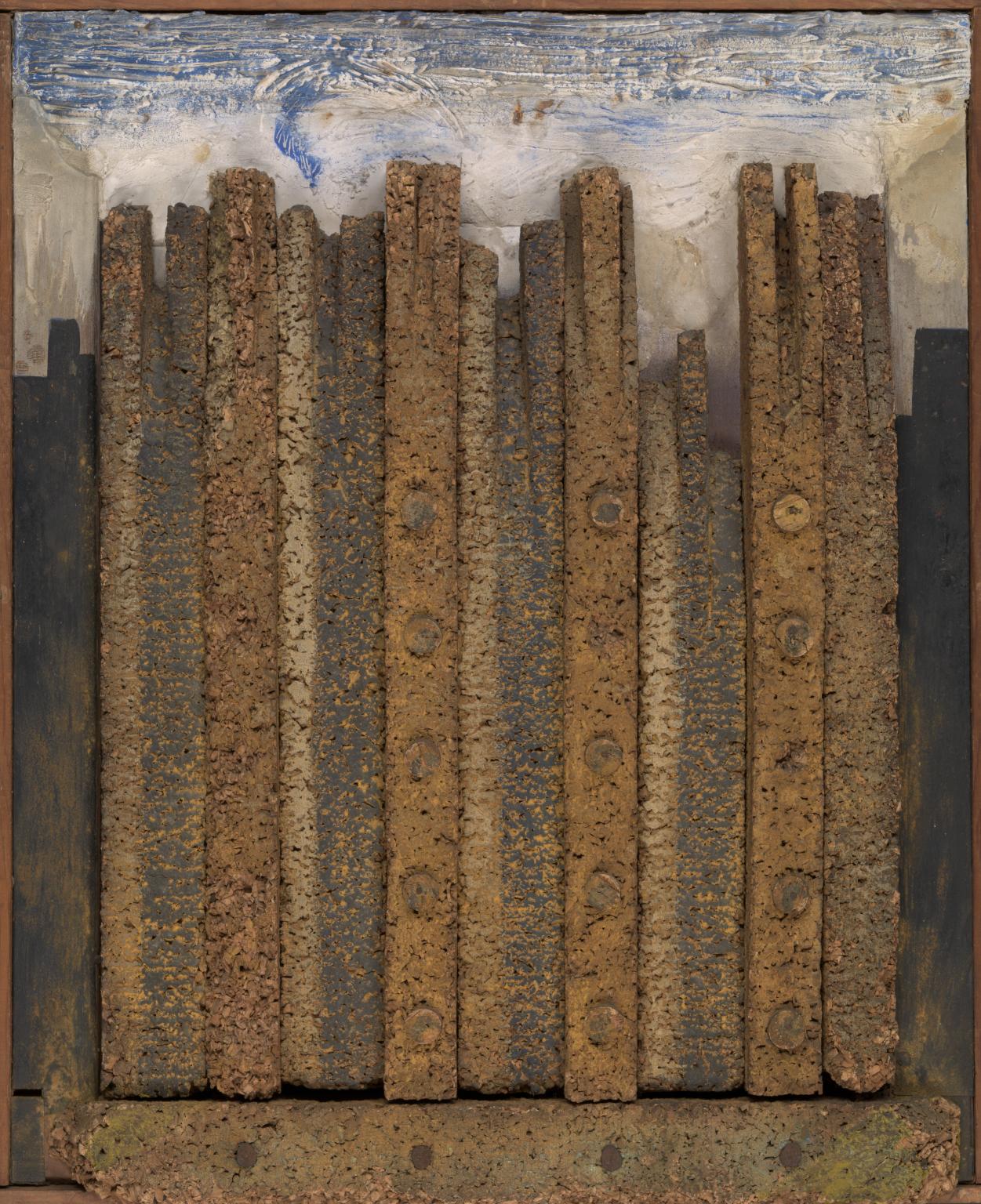
Max Ernst, Dadaville c.1924
Ernst was a key figure in the anarchic circles of Cologne Dada before moving to Paris and the emerging Surrealist movement. This strange work dates from that moment of transition. The use of rough cork is typical of Ernst’s inventive exploration of materials. By making the walls of the Dada city from this unexpected substance, he may offer a wry reflection on Dada’s temporary, but resilient, nature.
Gallery label, July 2008
24/30
artworks in Reality and Dreams

Winifred Nicholson, Flower Table 1928–9
In the 1920s, Winifred and Ben Nicholson lived a simple, rural life at Bankshead in Cumberland. This work shows pots of flowers wrapped in white tissue paper and arranged on a white table, or butcher's block, in that house. The sunlit table and domestic plant pots take on the appearance of mystical objects on an altar and reflect the craving for a new spirituality and peace that followed the First World War. The sense of a higher reality beyond the mundane is further suggested by the dots of silver paint across the surface of the image.
Gallery label, July 2001
25/30
artworks in Reality and Dreams
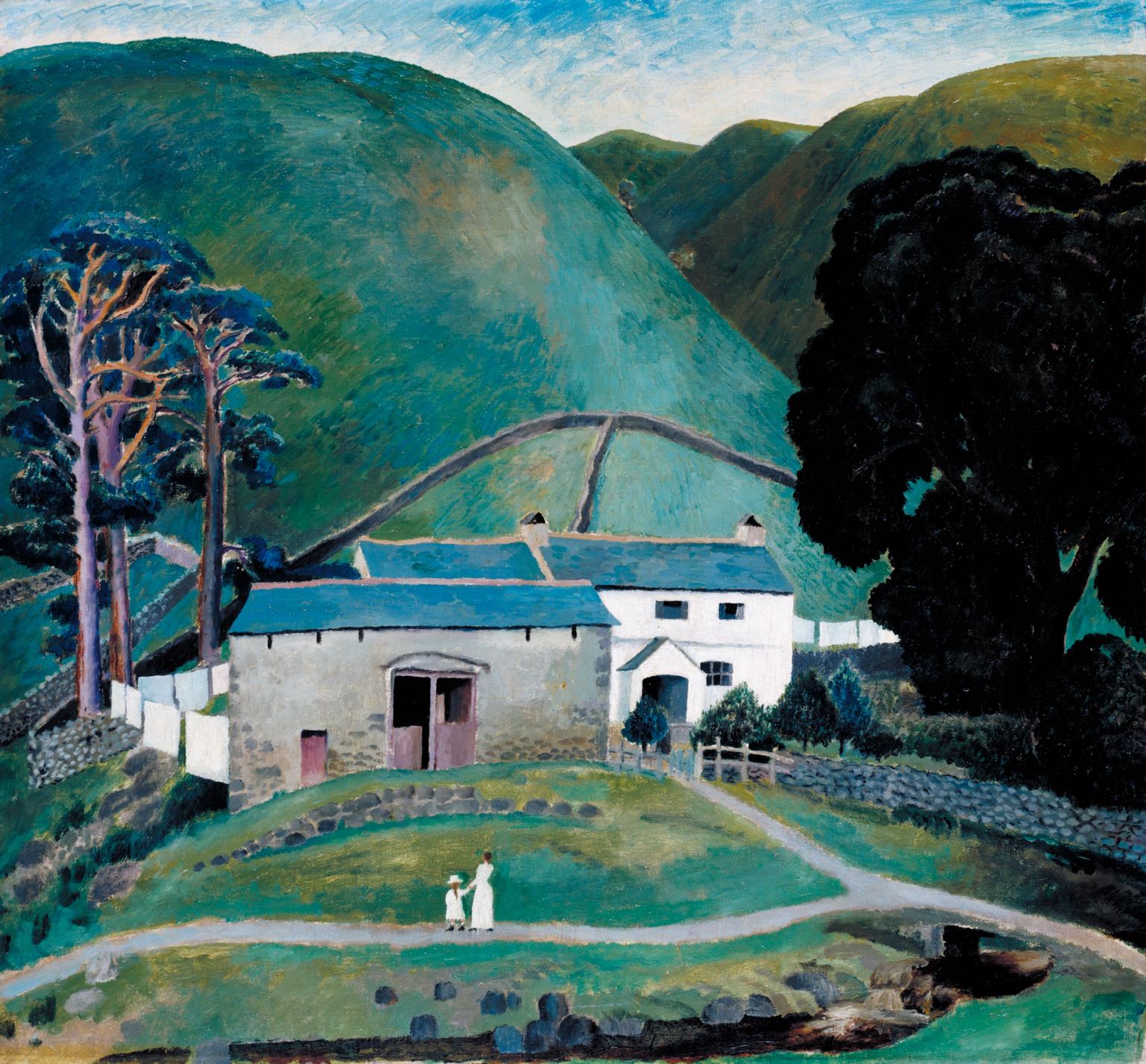
Dora Carrington, Farm at Watendlath 1921
Carrington was part of a successful generation of graduates from the Slade School of Art in the early 20th century. She was associated with the Bloomsbury Group of writers and artists, who lived, worked and studied together in London. This painting shows farm near Keswick in the Lake District, where the newly-wed Carrington spent a summer holiday with her husband and their friends. Critics have suggested that the landscape was distorted to reflect the curves of the female body. The two small figures gaze towards the landscape, possibly contemplating their own femininity.
Gallery label, February 2019
26/30
artworks in Reality and Dreams

Eileen Agar, The Autobiography of an Embryo 1933–4
Agar made this work as 'a celebration of life, not only a single one, but life in general.' Here she evokes the development of an embryo. Each of the four sections mixes symbols of life and death, and images of marine plants and animals. These images seem to suggest collective memories that the embryo carries into the world. This reflects the increasing focus on the unconscious in European art at the time. Agar saw this interest as establishing 'the dominance of a feminine type of imagination over the classical and more masculine order'.
Gallery label, August 2020
27/30
artworks in Reality and Dreams

Peter László Peri, Building Job 1937
During the 1930s Peri made a number of sculptures of labouring men, based on sketches he’d made in London. This relief shows two workmen supervising the lowering of an I-beam metal girder. The man in the foreground is signalling to the man in the distance to show how the girder should be lowered.
Peri moved to England from Budapest in 1933 and began to exhibit with the Artists International Association. He wrote that his interest was ‘in people, the way they live and their relationships’.
Gallery label, August 2004
28/30
artworks in Reality and Dreams
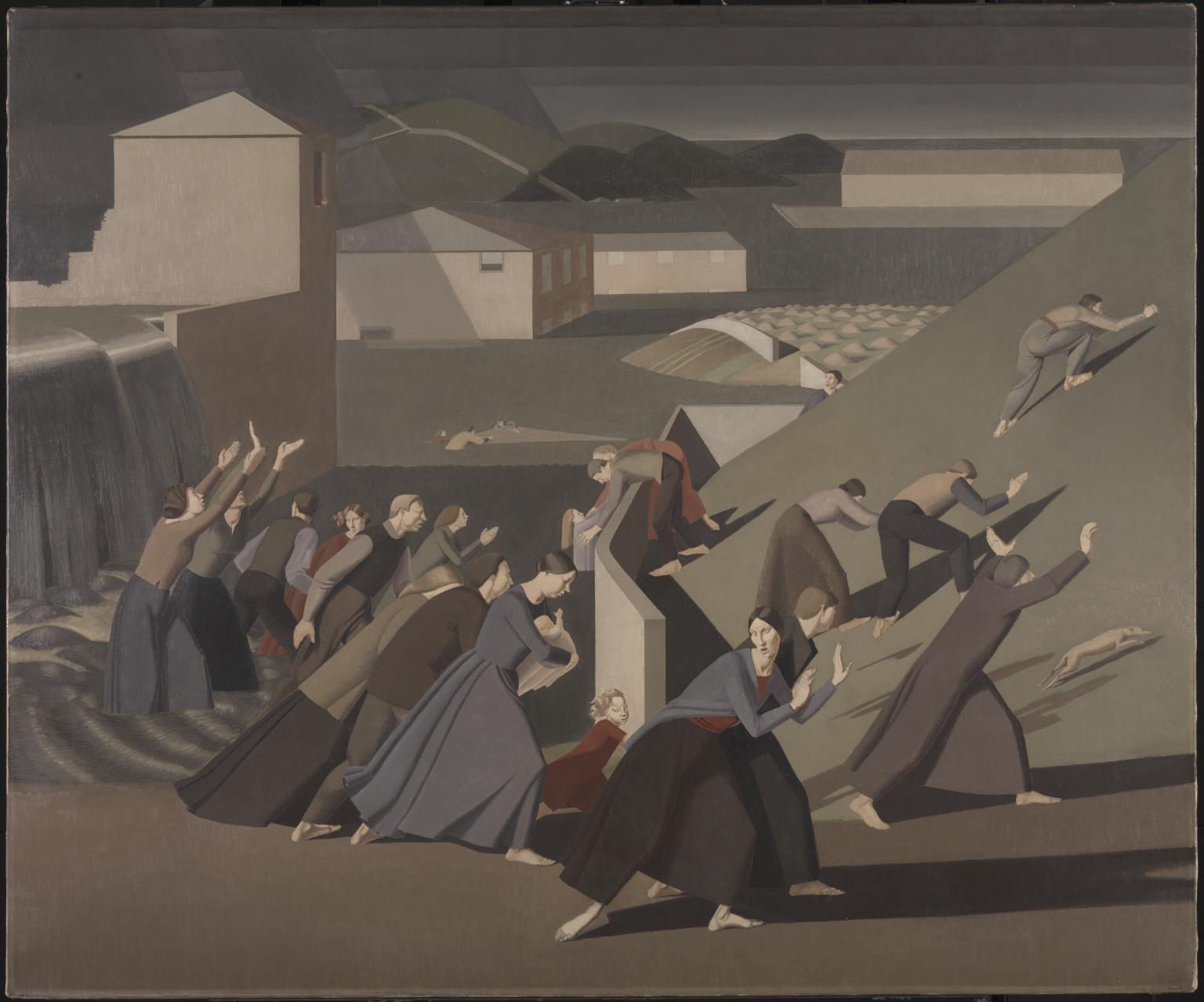
Winifred Knights, The Deluge 1920
Knights was one of several British artists who participated in a revival of religious imagery in the 1920s, while retaining some elements of a modern style. The theme of this work is the Old Testament Flood. In the foreground, people flee the rising waters towards the high ground, while Noah's ark floats calmly in the distance to the right. The frequent use of the word 'deluge' as a metaphor for the all-engulfing First World War would have given the painting a contemporary resonance.
Gallery label, September 2004
29/30
artworks in Reality and Dreams

Eileen Agar, Marine Object 1939
For Agar, the unexpected juxtaposition of found objects was ‘a form of inspired correction, a displacement of the banal by the fertile intervention of chance or coincidence’. In Marine Object she brings together part of a Greek amphora that she retrieved from a fisherman’s net in the south of France with crustaceans and flotsam gathered on a beach two years earlier, and a ram’s horn from Cumbria. Agar described the making of Marine Object as ‘short work... though it took me and the amphora a long time to attempt such a conjunction!’
Gallery label, January 2016
30/30
artworks in Reality and Dreams
Art in this room






























You've viewed 6/30 artworks
You've viewed 30/30 artworks
Responses
-
Unknown artist Tropic Reveries by Una Marson
date not knownOn display at Tate Britain part of Historic and Modern British Art
